I first saw the work of Arthur Ganson projected on a wall of the Portland museum of science and industry. It was a revelation. The videos were one machine sculpture after another, each work of art a clear statement of mechanical aesthetics and oblique purpose.
The video was unlabeled, so I had to call the museum offices three times in order to track down the name of the artist. It took another week to figure out how I could buy a copy of the video.
That was years ago. I have watched that video a dozen times (of course you can now see them all on his youtube account). This week, for the first time, I got to see them in person.
For some reason, the UT architecture school is hosting Arthur Ganson’s work. For a couple of weeks (according to the UT flunky I asked) you can see Ganson’s works in action at the architecture school (it’s the building with the beautiful courtyard that’s right across from the entrance of the UT post office, and the gallery is directly across from the courtyard entrance).
The sculptures are much more solid-looking in person. Margot’s Cat is just as funny in person as it is on video. Machine with ball chain is just as perplexing and seemingly impossible. Brownian Rice now utilizes black-eyed peas, which is visually more striking, but it lacks the punning. There’s also a few sculptures that are new to me, like the baby.
There have been revelations that weren’t clear from the video. For instance, inchworms is a piece that’s user-operated.
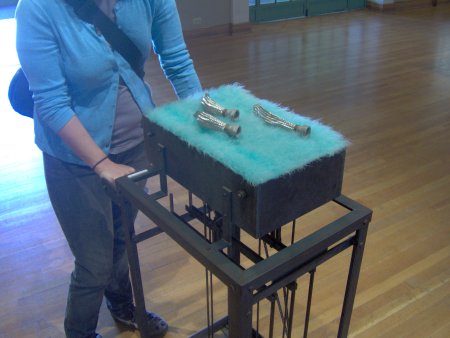
Most surprising was Cory’s Yellow Chair which I had always assumed used a full-sized chair. But it’s still one of the great works of Western art.
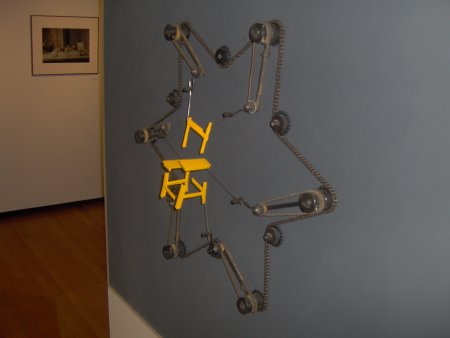
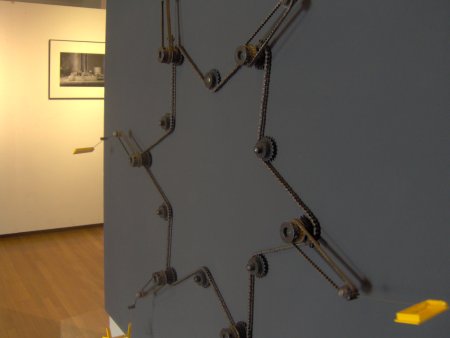
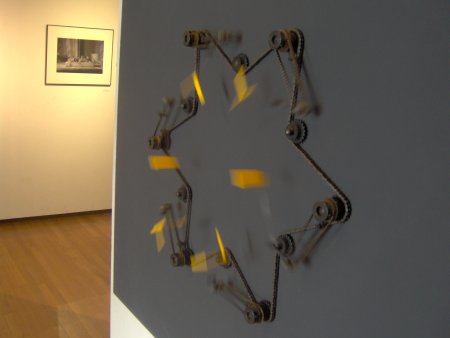
Looking at the back of the piece, there was a series of status lights and hand-written instructions in the event of an emergency.
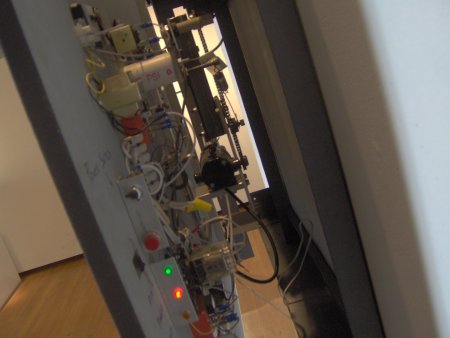
I also got to see Ganson speak to a standing-room only crowd. But you can hear him give a speech that’s really similar on TED talks.
He spoke a lot about the "honesty" of his machines, which I understood intuitively. If I had to explain what that means to a non-dude, I would say that it means the mechanical purpose is clear from the visible components. The logic of the pieces follows from the form, which is completely unified with the function. It’s at odds with the Macintosh design aesthetic, where the function is completely obscured by the pretty noodling of the case.
I’m going to visit the exhibit again before it closes out, so if you’re planning on heading down there, let me know and I’ll tag along. It’s particularly rewarding to see the reactions of people who have never seen this work before.